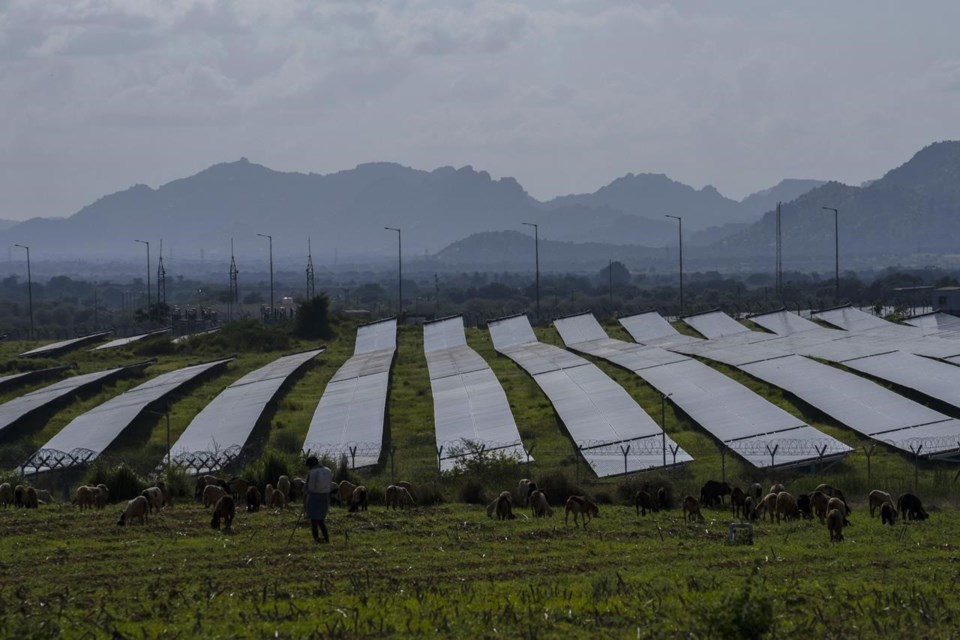BENGALURU, India (AP) — For countries to transition away from fossil fuels and toward cleaner energies like solar power, supply chains for components need to be more geographically diverse, officials said during a conference on solar energy in New Delhi said on Tuesday.
Currently, 75% of components needed for solar power are manufactured in China, according to a recent report by the International Energy Agency. Representatives at the fifth assembly of the International Solar Alliance, made up of 110 member countries, want that to change.
“By 2030, we expect that solar will be the cheapest source of electricity in most geographies," said Ajay Mathur, director general of the ISA.
Adding that freight prices have spiked, Mathur urged for "multiple regions from which solar photovoltaic products can go from the producer to the supplier” to ensure that more nations benefit from the cheap prices of solar energy.
Launched by India and France at the 2015 Paris climate conference, the ISA aims to promote the use of solar energy as countries look to reduce their fossil fuel use to curb global warming. And although China has invested over $50 billion in new solar supply capacity – ten times more than Europe − and created more than 300,000 manufacturing jobs, it is not part of the alliance.
“China’s policies have contributed to a cost decline of more than 80%, helping solar photovoltaics become the most affordable electricity generation technology in many parts of the world," said senior International Energy Agency analyst Heymi Bahar. "However, they have also led to supply-demand imbalances.”
Bahar added that the global market is almost entirely reliant on China for solar products, with 15% of global supply coming from one Chinese plant alone, leading to concerns that the world is too reliant on a few, concentrated supply chains.
“This concentration has already resulted in prices increasing during the Covid-19 pandemic and extreme weather events” in China when exports were disrupted, Bahar said. ”Diversification will result in a more secure supply chain."
Industry experts say that a diversified supply chain can also increase employment, grow economies, encourage innovations, provide energy security as well as help countries achieve their climate goals.
“Right now, the jobs that are being created in countries like India are largely in the construction and installation side of things and not on the manufacturing side," said Ulka Kelkar, who directs India’s climate policy analysis for the World Resource Institute. "To really benefit from the full potential of the job creation possibilities of solar manufacturing, it is important to diversify.”
India’s federal minister for power, RK Singh, told the conference on Tuesday that countries have “the responsibility of enabling development in the parts of the world that lack access to energy and energy security.”
The Indian federal government recently approved funding to the tune of $2.6 billion for a production-linked incentive scheme that would encourage domestic solar module manufacturing. The U.S.’s Inflation Reduction Act also encourages domestic manufacturing of solar power components.
The solar energy market needs to grow tenfold by the end of the decade if global climate goals are to be met, according to both the ISA and the International Energy Agency.
The ISA’s assembly, which runs until Wednesday, also announced programs that will encourage investments in solar energy in Africa as well as help start-ups in the solar energy space.
___
Follow AP’s climate and environment coverage at https://apnews.com/hub/climate-and-environment
___
Follow Sibi Arasu on Twitter at @sibi123
___
Associated Press climate and environmental coverage receives support from several private foundations. See more about AP’s climate initiative here. The AP is solely responsible for all content.
Sibi Arasu, The Associated Press


